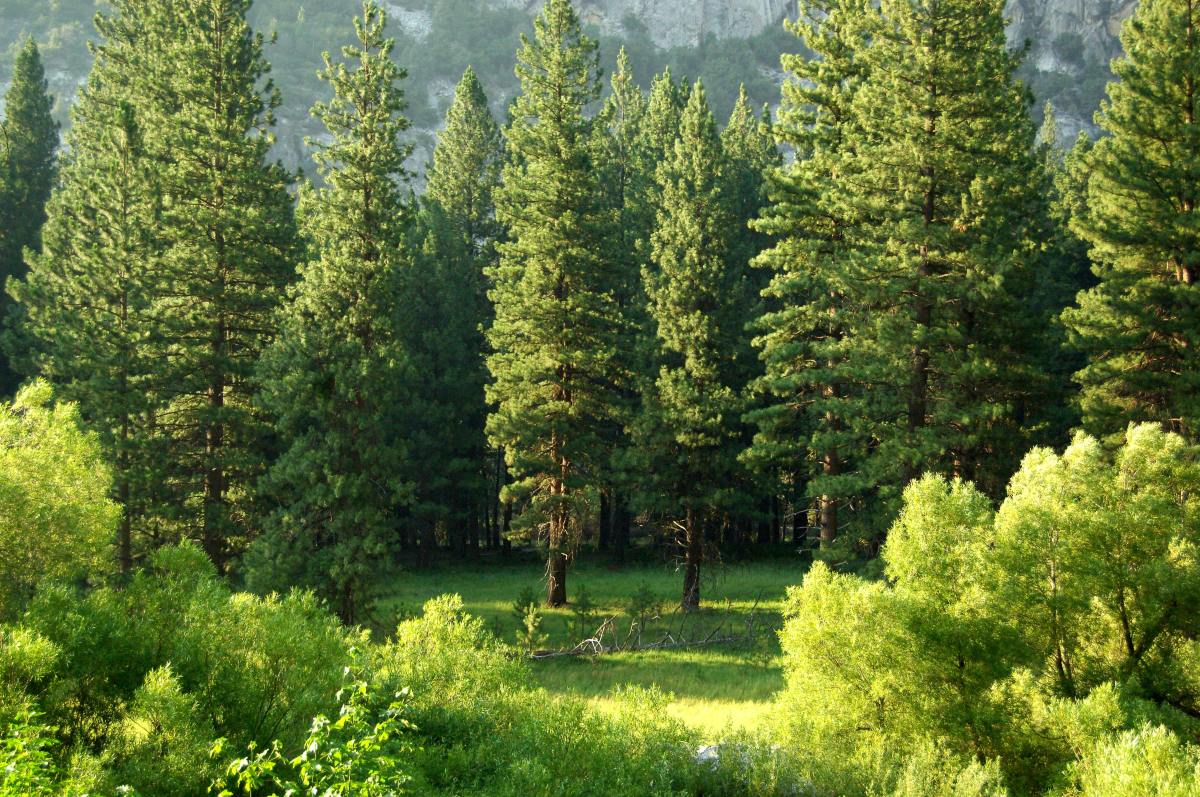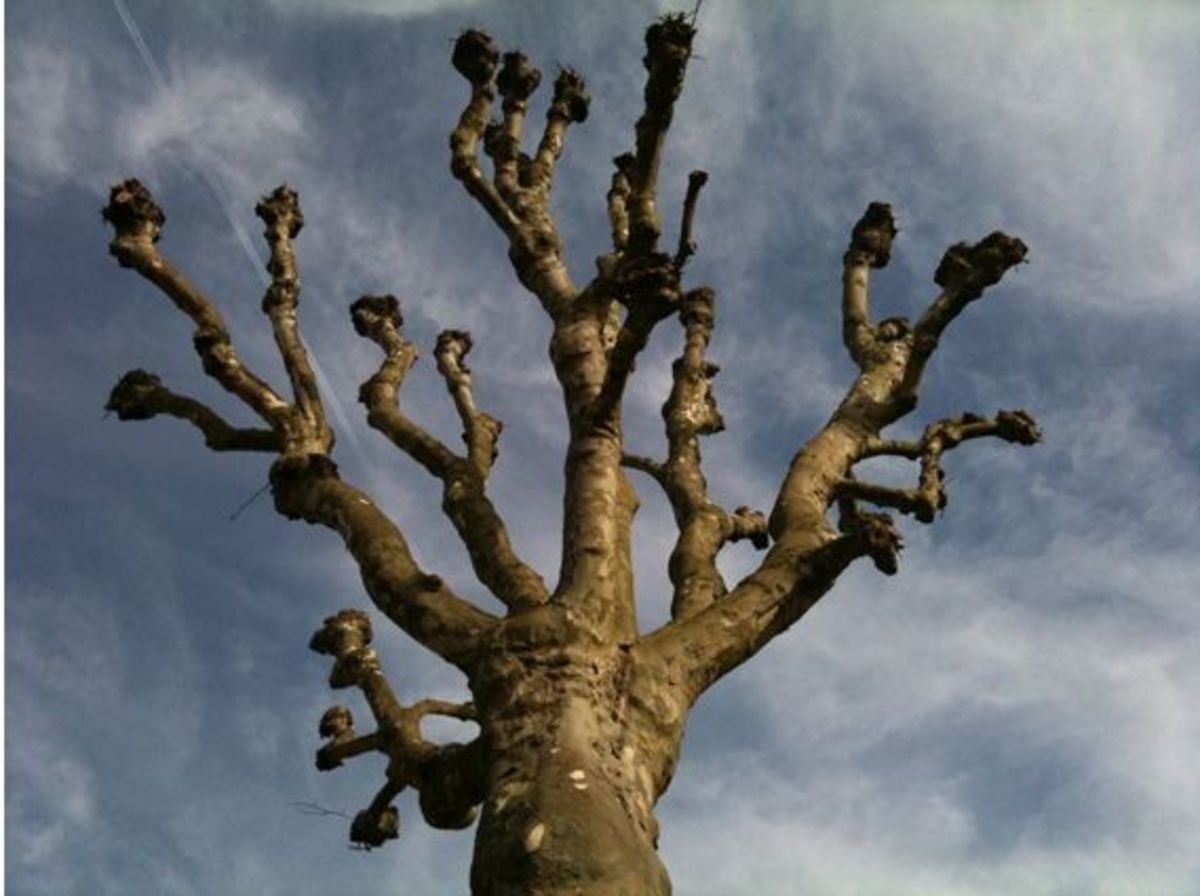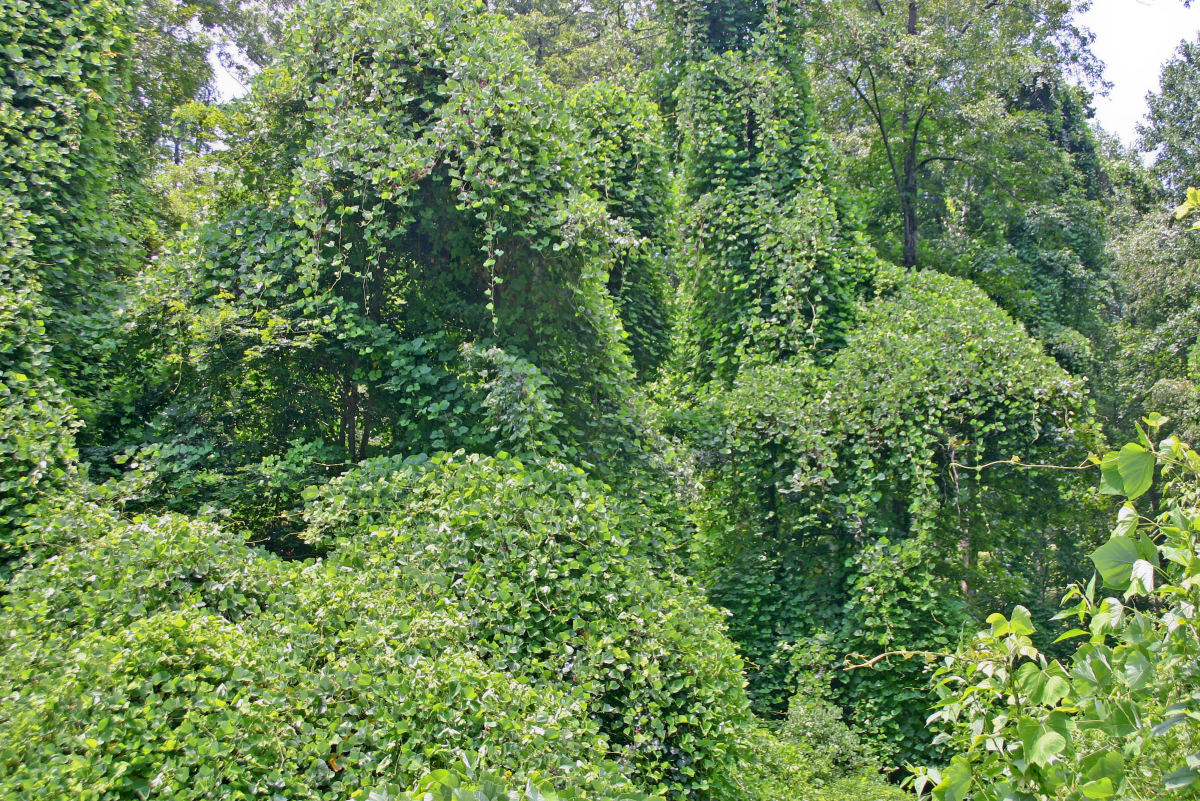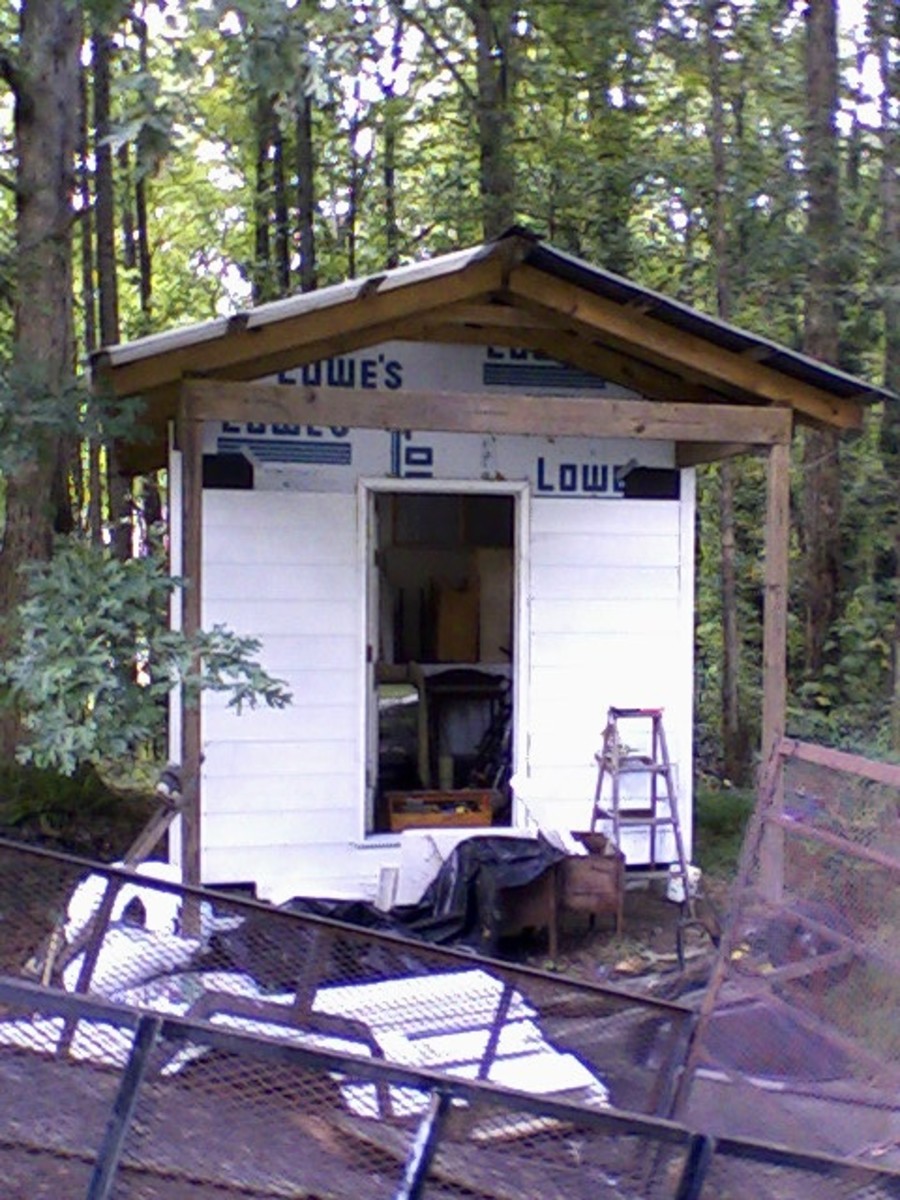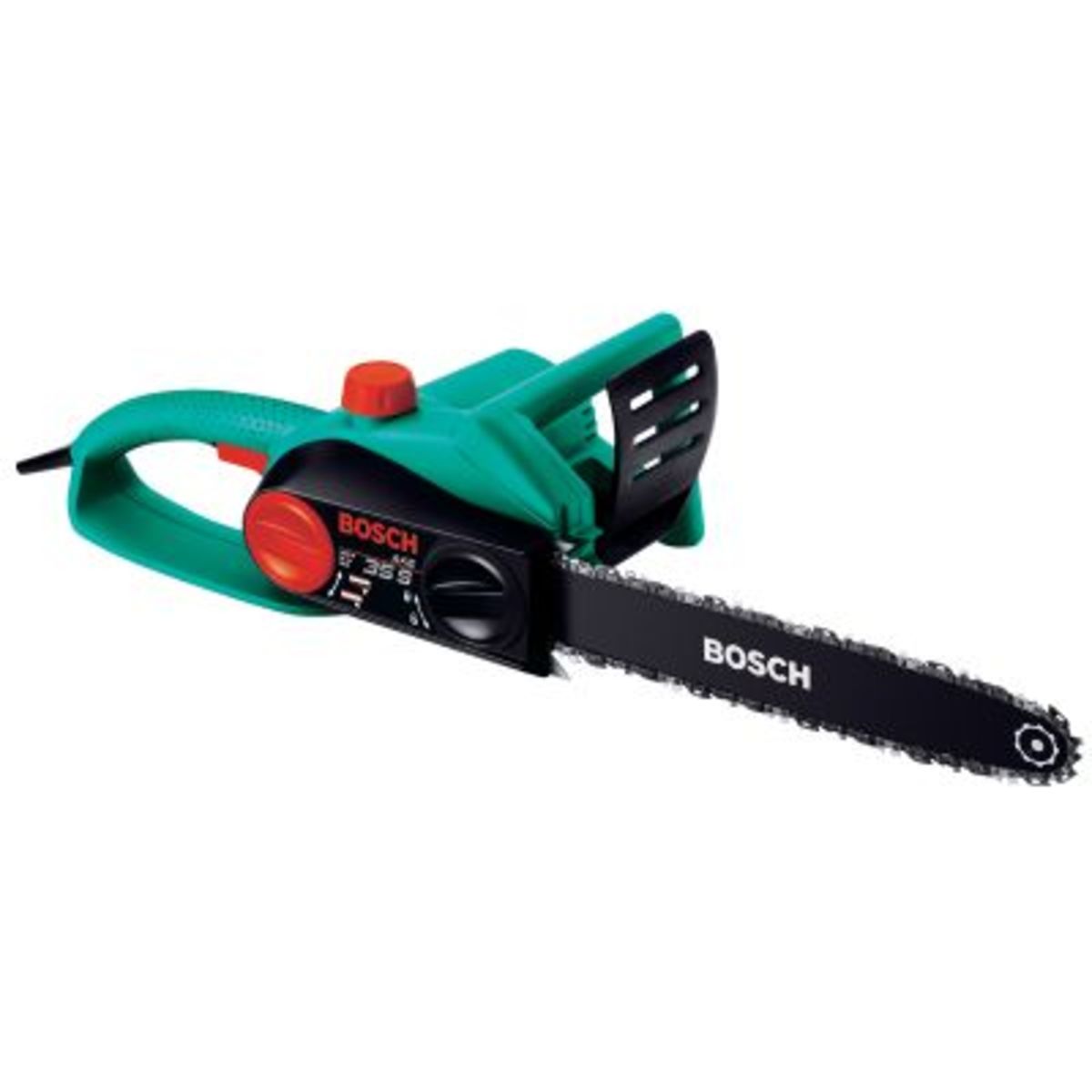Safe Cutting: How to safely cut up a log with a chainsaw
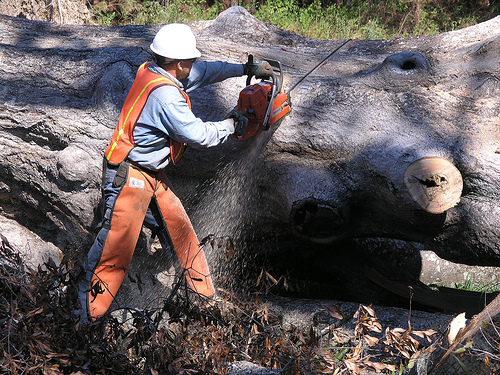
Have a plan before you start cutting. What are you going to do first?
If you're planning to start using a chainsaw to cut firewood or just for some maintenance work, you might find the following tips and tricks useful. Before you start using your chainsaw, make sure that you have some basic chainsaw safety gear: Chainsaw trousers, ear and eye protection, and some sturdy work boots.
When it comes to cutting up a log, which is the most likely thing you'll be doing to cut firewood, it's important to have a plan. What this means is that you can't just start cutting the log anywhere, randomly cutting off bits. Most likely this would result not only in unevenly sized timber, but you'll probably end up getting your saw stuck as well!
Let's say you have found a tree to cut up. The tree is already on the ground, so you don't need to fell it. It still has a lot of branches attached, and is almost lying flat on the soil. Where do you start?
The first thing to do is to remove all branches. If the branches are big, you want to use your chainsaw to cut them off. If there are a lot of small branches, you might find it easier to use an axe to just chop them off or break them. Either way, it is fairly simple to remove those branches that are on top of the log and on the sides. The ones that are underneath are going to require a bit of extra work. If the log is not too big and heavy, you can cut off the branches on the top and sides, then roll the log over so the bottom branches are off the ground. However, the log might be too heavy for this. Then what?
If this is the case, you need to think ahead. If you cut the branches, the log will sink the rest of the way onto the ground, meaning your saw may get stuck as the log collapses on the cut stump of the branch that was holding it up underneath. It is best to cut a few pieces of wood (maybe some thick branches or piece of another log) and position these underneath the log you are about to cut. This way when you cut the underneath branches, it will come to rest on these pieces of wood. This means that it will not lean on your saw, and that it will still be raised up off the ground. When you do cut the branches beneath a log, consider which way to cut them. You need to cut them from such an angle that thick branches will not close in, and trap your saw as they sink.
Once you have managed to remove all branches from a log, you're ready to start cutting firewood. Hopefully, the log is already up off the ground. If not there are two things you can do.
The preferable thing to do is to raise the log up off the ground. If the log is no bigger than about 12 or 14 inches in diameter, it is usually possible to use a crowbar or another heavy piece of timber to lever it up, and jam a piece of wood underneath. This is preferable because it is easier to cut entire rounds of the log, if you can cut straight through in one go. Of course, it is very important not to ever let your chainsaw chain contact the soil while it is spinning. Soil has a very abrasive action on the chain, and will blunt it instantly.
If possible, always try to lift log off the ground.
If it is not possible to lift the log, you will have to perform partial cutting. This means that you will cut the log most of the way through (three quarters or a bit more) in your desired size increments. You can cut the whole length of the log this way, or do it in half lengths - whatever you think is more appropriate in your case. Once you have moved along the entire length, partially cutting, you need to roll the log over, perhaps with the help of a crowbar. Once you've rolled the log 180°, you'll still be able to see where your partial cuts are, but will now be presented with the remaining uncut portion at each interval. You can now move along the log using the underside of the tip of your chainsaw to quickly sliced through the remaining wood, to sever your firewood rounds.
Of the two practices, it is by far preferable to lift the log physically off the ground and be able to cut the rounds all the way through on the first go. Partial cutting is an advanced technique, because it requires extra control when using only the tip of the saw to cut the wood.
If you are not familiar with chainsaw use, it is highly recommended that you enrol in a basic training course, where you can learn one-on-one from an instructor who will teach you these techniques and much more. Remember that it doesn't matter whether you are using a large petrol chainsaw, or a small electric chainsaw, they are all potentially very dangerous.

